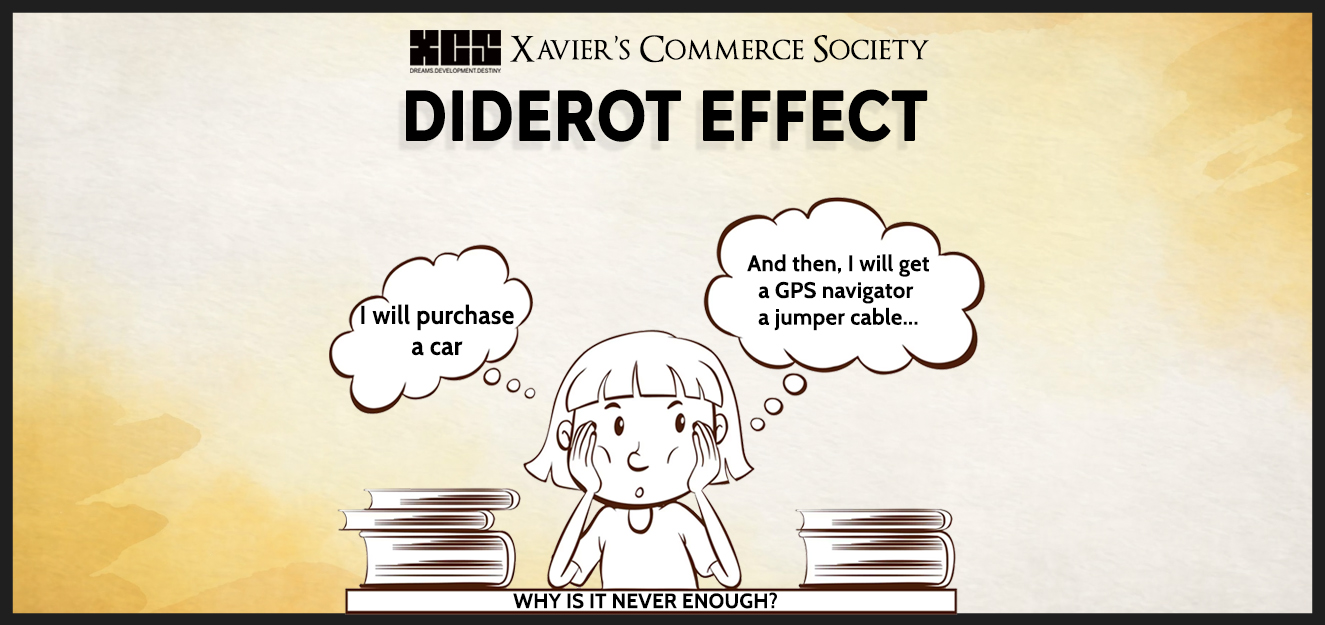


Why Is It Never Enough?
Consumerism is a buzzword of our times. With the ever-increasing significance of consumer goods, as well as the rapid velocity of their circulation within the target market, a very pertinent question emerges to the forefront - what is the real reason behind the enormous success of consumerism?
To understand the issue at hand, we must first understand its etymology. In the year 1765, a poverty-stricken yet famous French philosopher named Denis Diderot could not marry off his daughter due to his inability to afford the dowry to the groom. At his economic distress, the Empress of Russia - Catherine the Great, offered to buy his library for £1,000 GBP. With this influx of money, he utilized the excess amount over and above the dowry to purchase a scarlet robe for himself. This one purchase led him to a spiral of continuous other inessential purchases, like new rugs, sculptures, furniture and so on. This is what gave rise to the phenomenon of the Diderot Effect.
This theory postulates the reasons behind our relentless purchase of new items, despite not needing them at all. It goes on to explain that the introduction of one new item that does not align with our current sense of identity, creates a sense of need for more such items that fit this new article in our possession, to try aligning our current lifestyles to match the opulence of that better item. This creates a regressive and reactive cycle of purchases, giving rise to rampant profiteering by businesses internationally.
In the field of academics, these new purchases are known as 'Diderot unities' or 'product complements'. This effect is generated by the interaction between these product complements and consumers. Sociologists describe this phenomenon in further detail by theorizing that human beings tend to veer from one unity to another, thereby creating demand for other goods which do not form a part of their usual lifestyle. As we change our product complements, we also tend towards making a new version of ourselves and our identity. Economist Juliet Schor expresses this aptly in her book 'The Overspent American: Why We Want What We Don't Need' - that we are led by a "process of competitive, status-conscious consumption driven by dissatisfaction."
Consider buying a shirt from a high-end luxury brand. Post this purchase, our immediate next impulse is to buy a similar pair of luxury trousers, pair it with similar accessories and shoes. Despite owning such articles already, we feel the need to buy more of them, to align with that one expensive purchase. The old items do not provide the same utility any longer, and hence fuels a chain of high demand for consumer goods in the competitive market.
Furthermore, the theory also explains how consumers prefer brand specific products as a part of their consumption basket. An example would be that of the mobile phone market. In the Indian context, an iPhone is considered as a luxury product, associated with a high brand value - Apple. As a rational consumer, one would always wish to elevate their lifestyle towards the better, and want to purchase the iPhone. With this purchase, the Diderot Effect sets into motion, urging the consumer to also purchase a MacBook, iWatch, Airpods and so on.
This also reveals how businesses benefit immensely from the strategy of family or umbrella marketing. This marketing tactic makes use of a confirmation bias inherent within consumers. In continuation of the previous example, due to Apple's high brand worth as well as its strategic utilization of family branding policies, it has made all the the products bearing the 'Apple' logo equally important and desirable to consumers. Thus, when one enters into the vortex of continuous purchases, this policy of family branding helps the business to generate immense profits.
The phenomenon also alludes to the general proclivity of life to always ascend towards betterment and progression, and rarely seeks to downgrade or eliminate. In this journey towards continually improving the standards of life, consumers fall prey to the evils of unbridled consumerism and carry forward this vicious cycle.
Two new concepts that have developed from this phenomenon are those of Green Consumerism and Sustainable Consumption. These concepts underline as to how any new purchase or receipt of a gift creates dissatisfaction within the existing items and environment, generating a negative trap of consumption with harmful effects on the environment as well as the psychology of the consumers. Both of these focus on reducing the ramifications posed by the Diderot Effect, and thus try to curtail businesses from amassing exponential profits and power.
This effect shines a new light on the nature of consumerism. However, will the growing consumer awareness bring forth a change in their behaviour, leading to consumers being more discerning about their purchases; leveling the field between the economic agents? Or, will vicious elements of snob appeal, ignorance and prevalent cognitive biases amongst customers fail sway them towards prudent fiscal management, allowing the evils of unrestrained consumerism to persist within society?